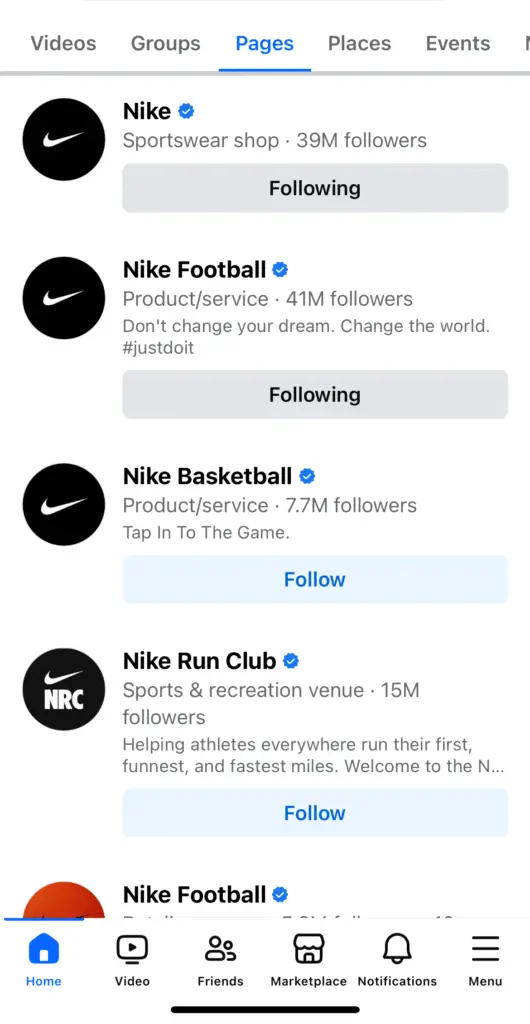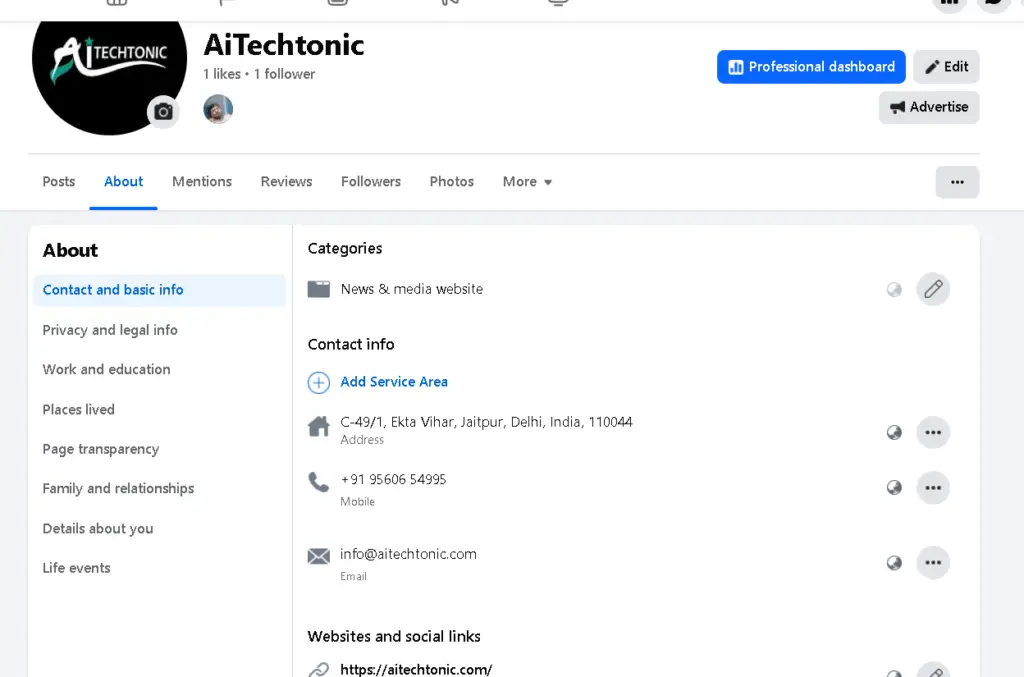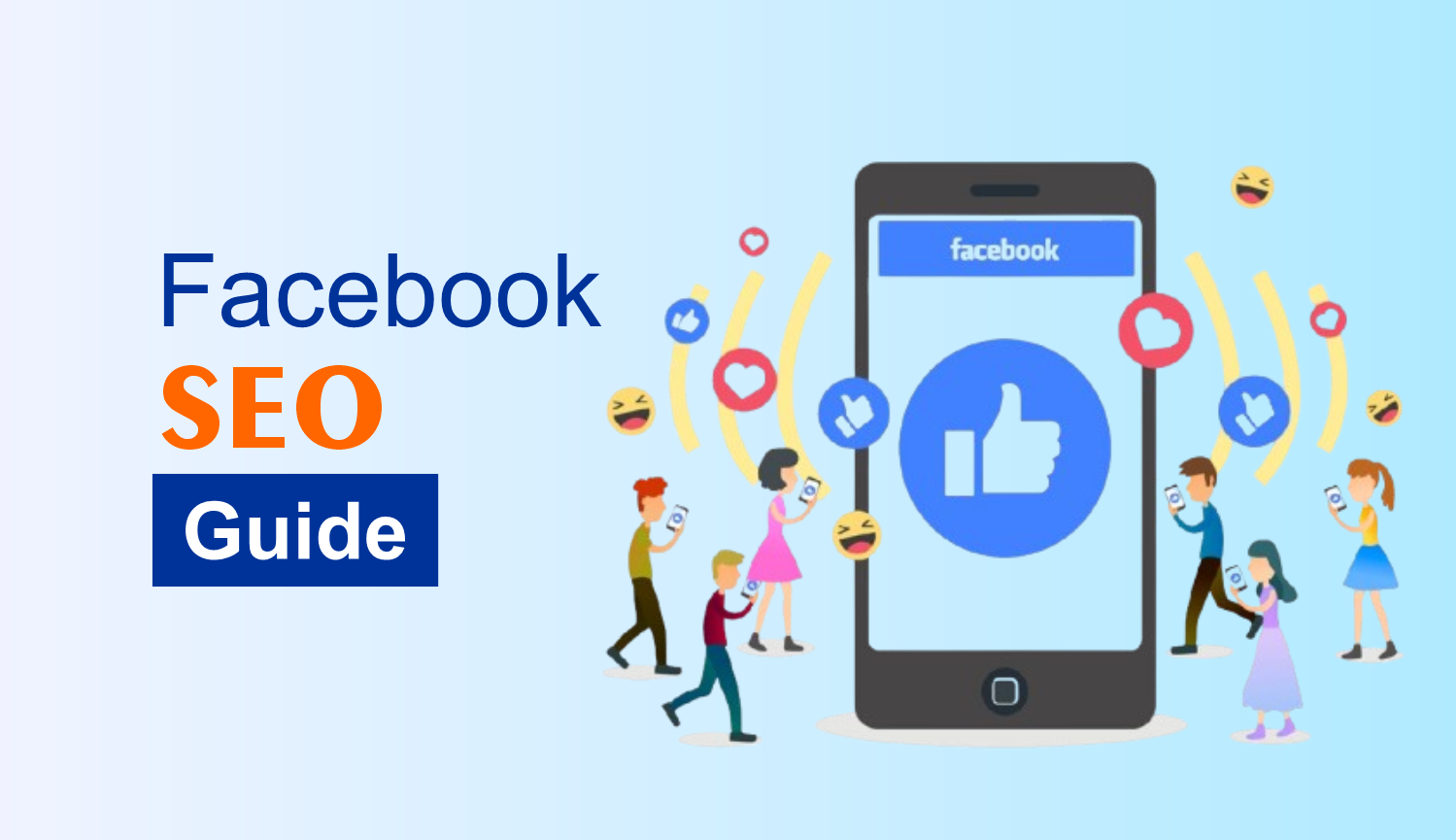The Ultimate Guide to Facebook SEO in 2025: Boost Your Reach, Visibility & Engagement
In the fast-evolving digital marketing landscape of 2025, having a well-optimized Facebook presence is more crucial than ever. With over 3 billion monthly active users and hundreds of millions of businesses vying for attention on the platform, standing out isn’t just about posting regularly — it’s about smart, strategic optimization. That’s where Facebook SEO (Search Engine Optimization) comes into play.
Whether you’re a small business owner, a brand manager, a digital marketer, or a content creator, mastering Facebook SEO will significantly improve your organic reach, visibility in search results (both within Facebook and on Google), and ultimately, drive more engagement and conversions.
This comprehensive guide breaks down everything you need to know about Facebook SEO in 2025 — from what it is and why it matters to a step-by-step roadmap for boosting your visibility and ranking higher in both Facebook’s internal search and external search engines.
What is Facebook SEO?
Facebook SEO refers to the process of optimizing your Facebook Page, posts, and content so they rank higher in Facebook’s internal search and, to some extent, in external search engines like Google. Just like you’d optimize a website for Google, you need to optimize your Facebook presence to make it easier for users to find you when they search for relevant topics, services, or keywords.
This involves a mix of:
- Page optimization
- Strategic keyword usage
- High-quality content creation
- Engagement generation
- Local SEO (for location-based businesses)
- Consistent branding
- And performance analysis
It’s not just about stuffing keywords or uploading flashy videos — it’s about being strategic, authentic, and aligned with user intent.
Why Facebook SEO Matters in 2025
1. Organic Visibility is Declining
With Facebook’s continued algorithm changes prioritizing content from friends and family, organic reach for Pages has been on the decline. Paid ads are effective but costly in the long run. SEO offers a cost-effective alternative to increase visibility organically.
2. Facebook is a Search Engine Too
Over 2 billion searches are conducted on Facebook every day. Users search for pages, groups, events, businesses, and local services. An optimized page increases the chances of appearing in those results.
3. Search Engines Index Facebook Pages
Your Facebook Page and posts can appear in Google search results. With the right SEO practices, you can boost your chances of appearing in Google’s rich snippets and drive more off-platform traffic.
4. Enhanced Brand Credibility
A fully optimized, active, and engaging Facebook Page builds credibility and trust. Users are more likely to follow, interact with, and purchase from pages that appear professional and authoritative.
5. Drive Website Traffic & Conversions
Optimizing your Facebook content with the right links and calls-to-action (CTAs) helps funnel users to your website, online store, or landing page — increasing your chances of conversions and sales.
Key Facebook SEO Ranking Factors in 2025
To optimize your presence, you must understand the core ranking factors that influence Facebook’s algorithm and search visibility.
1. Relevance of Content
Facebook evaluates how relevant your posts are to user interests and search queries. Posts with well-targeted keywords, relevant topics, and timely updates are more likely to show up in results.
2. Engagement Signals
The algorithm prioritizes posts with higher engagement rates — likes, shares, comments, saves, and reactions. Interactive content (polls, Q&As, live videos) tends to perform better.
3. Page Completeness & Accuracy
A fully completed Page — including profile picture, banner, business category, contact info, location, and a compelling “About” section — ranks higher. An incomplete page sends a signal of low authority.
4. Content Freshness
Posting consistently with up-to-date and trending content helps keep your page relevant and visible. Facebook rewards active pages over dormant ones.
5. Keyword Optimization
Using targeted keywords in strategic places — your page name, username, description, posts, and image captions — helps the algorithm understand what your page is about.
6. Backlinks to Facebook Page
When external sites link back to your Facebook page or posts (from blogs, press releases, or directories), it signals authority and can positively influence visibility on Google.
7. User Behavior
Facebook tracks how users interact with your content. High click-through rates (CTR), watch times (for videos), and shares are all positive indicators.
Step-by-Step Guide to Facebook SEO in 2025
Step 1: Optimize Your Facebook Page Info
Start with the foundation: your Facebook Business Page. Ensure everything is filled out accurately and strategically.
Checklist:
- Page name: Use your brand name + keyword (e.g., “Healthy Bites – Organic Snacks”)
- Username/URL: Create a custom URL that’s easy to remember and SEO-friendly
- Category: Select the most relevant business category
- About section: Include keywords naturally while describing your business
- Contact info: Phone number, email, website URL — all should be current
- Business hours: Especially crucial for local SEO
- Profile picture: Ideally, your brand logo
- Cover photo: Branded visuals or CTAs that reflect your value proposition
Step 2: Perform Keyword Research
Use keyword tools like:
- Facebook’s own search bar (auto-suggestions)
- Google Keyword Planner
- Ahrefs or SEMrush
- Ubersuggest
Identify high-volume, low-competition keywords that align with your niche. Look for long-tail keywords like:
- “Vegan snack delivery in Los Angeles”
- “Affordable digital marketing services 2025”
Use these in your page bio, post descriptions, video captions, and image alt texts.
Step 3: Create High-Quality, SEO-Friendly Content
Your posts should solve problems, entertain, or educate. Combine content formats:
- Text posts: Incorporate keywords naturally
- Images/Infographics: Add alt text and captions with keywords
- Videos: Use subtitles, captions, and keywords in the title/description
- Stories & Reels: Use hashtags and engaging CTAs
- Live videos: Promote upcoming sessions and encourage interactions
Pro Tip: Repurpose blog posts into carousels or short videos to maintain content freshness.
Step 4: Generate More Engagement
To improve your Facebook SEO ranking, create content that sparks interaction.
Ideas to increase engagement:
- Run contests or giveaways
- Ask questions and respond to every comment
- Go live regularly and engage in real-time
- Post polls, quizzes, and interactive stories
- Share user-generated content and tag contributors
- Collaborate with influencers or partners
Use Facebook Groups: Create or participate in niche groups to expand your reach and authority.
Step 5: Post Consistently
Establish a posting calendar. Aim for at least 3-5 posts per week. Use scheduling tools like:
- Meta Business Suite
- Buffer
- Hootsuite
Use insights from past posts to decide when your audience is most active.
Step 6: Optimize for Local SEO (If Applicable)
If you’re a local business, optimize your presence accordingly:
- Add a physical address
- Use local keywords (e.g., “best yoga studio in Austin”)
- Encourage customer reviews and respond to them
- Tag location in your posts
- Join local Facebook groups
Step 7: Add Links Strategically
Use Facebook as a funnel to your external website or landing pages:
- Add links in post captions and video descriptions
- Use UTM parameters to track traffic
- Link to your Facebook Page from your website and email signature
Avoid spammy tactics. Too many outbound links without value can hurt your visibility.
Step 8: Leverage Facebook Stories & Reels
Stories and Reels dominate user attention in 2025. Use them to:
- Showcase behind-the-scenes content
- Highlight customer testimonials
- Promote products or events
- Use trending hashtags and music for better reach
Hashtags in Reels now function similarly to Instagram SEO, improving discoverability.
Step 9: Track Performance and Adjust
Regularly review your Facebook Insights:
- Reach and impressions
- Engagement rates
- Click-through rates
- Follower growth
- Top-performing content
Use the data to refine your strategy. Test different content formats, posting times, or CTAs. Continuous optimization is key.
Bonus Tips for Facebook SEO in 2025
- Enable reviews: Positive feedback adds credibility and boosts search rankings.
- Use branded hashtags: Create a unique hashtag to build community and track mentions.
- Embed Facebook posts in blogs: This drives backlinks to your posts, boosting SEO.
- Cross-promote: Share Facebook content on Instagram, email, and blogs for broader visibility.
- Avoid engagement bait: Facebook penalizes clickbait or repetitive “Like if you agree” posts.
- Focus on storytelling: Authentic, emotional narratives increase engagement and trust.
14 Powerful Facebook SEO Tips to Dominate in 2025
In a digital world where attention is currency, ranking higher on Facebook isn’t just nice to have—it’s essential for visibility, engagement, and business growth. While we often think of SEO in terms of Google, Facebook has its own internal search algorithm that decides which pages, posts, and profiles rise to the top. Mastering Facebook SEO means optimizing your presence so your brand gets discovered, followed, and trusted.
Whether you’re a marketer, business owner, or creator, these 14 proven Facebook SEO strategies will help you outshine your competition and boost your organic visibility on the world’s largest social platform.
1. Select a Page Name That Reflects Your Brand and Purpose

Your Facebook Page name is the digital nameplate of your brand. It’s one of the first elements Facebook indexes and is often the first thing users see in search results. Choose a name that is clear, specific, and closely aligned with your business identity.
Avoid vague titles like “The Coffee Place” and opt for descriptive, geo-targeted names like “Brew Brothers Coffee – Austin.” This helps not just with internal Facebook search but also improves visibility on Google and other search engines.
Consistency is key: once you pick a name, avoid frequent changes. Let your brand name grow roots across the internet.
2. Secure a Branded Vanity URL

After setting up your Facebook Page, the next step is claiming a clean, memorable custom URL (also known as a vanity URL). Instead of a jumbled URL with numbers (like facebook.com/page/12345678), a vanity URL like facebook.com/BrewBrothersAustin looks professional and is easier to share.
This not only increases brand recall but also boosts your page’s authority and trustworthiness, especially in search results. Align it with your business name and try to use the same handle across your social channels to maintain consistency.
Set this by heading to your Page settings and editing your “@username.”
3. Maintain Consistent NAP Information
If your business has a physical location, local SEO is a game-changer. Ensure your Name, Address, and Phone Number (NAP) are displayed accurately and consistently across all platforms—Facebook, your website, Google Business Profile, Yelp, and more.
Even for online-only businesses, providing a reliable customer support email, business hours, and a city location (if applicable) helps users trust your brand. Discrepancies in NAP data confuse search engines and users, leading to lost opportunities and lower credibility.
4. Align Branding Across All Platforms

Your Facebook Page should immediately reflect your brand’s personality and design. When visitors land on your page, they should feel like they’re in the right place—even if they just came from your Instagram profile or website.
Use the same logo, color scheme, tagline, and brand voice everywhere. Your cover photo should reinforce your value proposition or current campaign. Think of your Facebook presence as an extension of your storefront—make it familiar and inviting.
Big brands like Apple, Netflix, and Nike follow this strategy meticulously across all digital touchpoints.
5. Optimize the About Section with Keyword-Rich Content

Too many businesses overlook the power of the “About” section. But this area is crucial for both user experience and SEO. Write a compelling, keyword-optimized description that tells visitors who you are, what you do, and why they should care.
Mention your location, niche, and services naturally within this section. For instance, a pet grooming business could say, “At Paws & Relax, we offer professional dog grooming in Dallas with a gentle touch and a loving approach.”
Don’t forget to update this regularly if your offerings evolve.
6. Use Keywords Strategically (But Naturally)
Once you’ve researched your primary and secondary keywords, weave them into your Facebook Page in a subtle, user-friendly way. Important places include:
- Page name (if appropriate)
- Vanity URL
- About section
- Post captions
- Image alt text
- Comments on your own posts
Avoid keyword stuffing. The goal is to keep your language authentic and useful for your audience, while still signaling relevance to Facebook’s algorithm.
7. Build Backlinks to Your Facebook Page

Backlinks don’t only benefit your website—your Facebook Page can also gain SEO juice when authoritative websites link to it.
Add links to your Page in your website’s footer, email signature, blog bios, press releases, YouTube descriptions, and other social media bios. If you’re featured in media articles or partner with influencers, request that they link to your Facebook Page.
The more external references you have, the more search engines see your Page as trustworthy and worthy of higher rankings.
8. Add a Strong Call-to-Action (CTA) Button
Your CTA button on Facebook isn’t just for show—it’s a driver of engagement and conversions. Whether it says “Book Now,” “Shop,” “Call Us,” or “Sign Up,” the CTA tells users exactly what to do next.
Make sure your CTA aligns with your current business goals and leads users to a relevant landing page or action. You can easily edit this button from your Page admin dashboard.
Think of the CTA as your conversion funnel’s frontline—make it count.
9. Share Engaging Visual Content
Visuals are at the heart of Facebook content. High-quality images and videos not only stop the scroll but also get prioritized by Facebook’s algorithm. Visual content tends to receive more likes, comments, and shares, which signals relevance and boosts your SEO.
Use branded images, infographics, product demos, and behind-the-scenes clips to showcase your offerings. Include descriptive captions and alt text where possible for accessibility and keyword value.
Video, in particular, drives higher engagement, so invest in bite-sized reels, tutorials, and customer stories.
10. Encourage and Respond to Reviews
User reviews are gold for SEO. Positive feedback not only boosts your brand’s credibility but also signals to Facebook that your page is active and engaging.
Encourage satisfied customers to leave a review after every purchase or interaction. Then, respond thoughtfully to both praise and criticism. This shows that you value customer input and are attentive—something that users and algorithms both appreciate.
Don’t ignore this section—it’s a direct line to trust.
11. Boost Engagement Through Conversations
Facebook favors posts that spark interaction. Ask questions, host polls, encourage comments, and reply to followers promptly. The more conversations happen on your page, the more likely it is to appear in other people’s feeds.
Don’t forget Messenger—over 1 billion users interact with businesses through Facebook messages each week. Being responsive here increases your chances of being recommended by Facebook for customer interactions.
Using social media inbox tools like ContentStudio or Buffer can help you stay on top of all your incoming messages and comments.
12. Be Consistent With Your Posting Schedule
Inactivity is a silent killer of engagement and SEO. If your page hasn’t posted in months, users will assume you’re no longer active—and so will the algorithm.
Post regularly, whether it’s three times a week or once daily. Use analytics to determine your audience’s peak activity times and schedule your posts accordingly.
Tools like ContentStudio can even suggest optimal posting times based on engagement history. Regular updates show Facebook that your page is current, relevant, and worth featuring.
13. Optimize Marketplace Listings (If You Sell)
If you use Facebook Marketplace to sell products or services, optimize those listings like you would on an e-commerce platform. Include relevant keywords in the title and description, use clear product photos, and categorize your items correctly.
Provide full details, such as price, availability, and shipping options. This makes it easier for users to discover your listings through both Facebook and external search engines.
Marketplace optimization is an often-missed tactic that can significantly increase visibility for small businesses and resellers.
14. Keep Up With Facebook’s Evolving Algorithms
Facebook’s algorithm is not static—it’s constantly changing. What worked last year may not work this year. That’s why it’s essential to stay educated on the latest updates, trends, and best practices.
Follow trusted marketing blogs, join SEO and social media communities, and subscribe to Facebook Business updates. Attend webinars or online workshops if possible. By staying informed, you’ll be ready to pivot strategies before your competitors do.
Learning never stops, especially in digital marketing.
Rank Higher, Reach Further: The Facebook SEO Takeaway
Facebook SEO is a blend of smart branding, strategic optimization, and consistent engagement. It’s not just about being found—it’s about being remembered, trusted, and chosen over others.
By following the 14 tips outlined above, you’re not only optimizing your page for search—you’re enhancing the overall experience for your followers. And that’s what modern SEO is really about.
Implement these strategies today and begin your journey toward building a high-ranking, high-performing Facebook presence in 2025.
Frequently Asked Questions (FAQs)
How do I optimize my Facebook page for SEO?
Begin by using relevant keywords in your page name, About section, and post captions. Make sure your NAP (Name, Address, Phone Number) is accurate and consistent. Share quality content, engage with your audience, and earn backlinks to increase visibility.
Do Facebook ads help with SEO?
While Facebook ads can boost reach and exposure, they do not directly influence SEO rankings. However, higher visibility through ads can increase engagement, which indirectly helps your page’s credibility and discoverability.
Can I improve my Google search ranking through Facebook SEO?
Yes. By optimizing your Facebook Page and ensuring it’s linked with your website, you can improve how both are indexed by search engines. Keywords, backlinks, and consistent branding across platforms all play a role.
How can I track my Facebook SEO performance?
Use tools like ContentStudio, Sprout Social, or Facebook Insights to monitor metrics such as engagement, reach, follower growth, and post performance. These indicators help you understand what’s working and where to improve.
Is SEO effective on Facebook?
Absolutely. Facebook SEO may differ from traditional Google SEO, but the goal is the same: improve visibility and attract the right audience. Through smart optimization, you can grow organically without solely relying on paid ads.
Are there any Facebook groups for learning SEO?
Yes! Join communities like SEO Signals Lab, Moz’s SEO Group, and Ahrefs Insider. These groups offer discussions, case studies, and tips from SEO pros that can help you stay updated and sharpen your strategies.
Can I apply SEO tactics to Facebook Marketplace?
Definitely. Use targeted keywords in product titles and descriptions. High-resolution images and detailed specs also help your listings appear in relevant searches within Facebook Marketplace and beyond.
Final Thoughts: Facebook SEO is a Long-Term Game
Facebook SEO isn’t a magic wand — it’s a consistent, data-driven process. As Facebook continues to evolve into a multi-dimensional discovery platform (search, stories, reels, shops), optimizing for its ecosystem is non-negotiable for any serious digital marketer or business in 2025.
By applying the strategies outlined in this guide, you can enhance your discoverability, grow your audience organically, build trust, and drive more sales — all without spending a fortune on ads.
Whether you’re starting from scratch or fine-tuning an established page, now is the perfect time to invest in your Facebook SEO strategy.

